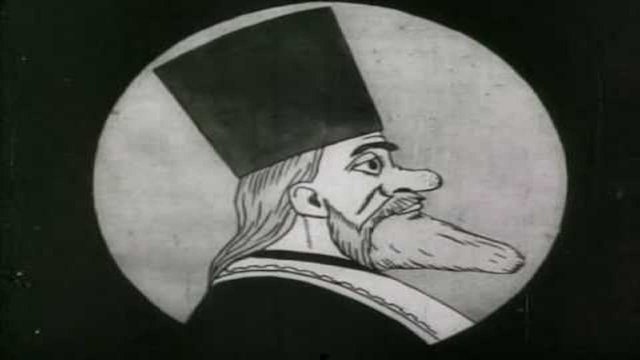
Soviet Toys
Where to Watch Soviet Toys

Soviet Toys is a pioneering animated short film, released in 1924, at a time when the world of animation was still relatively new. The film was directed by the acclaimed Soviet filmmaker, Dziga Vertov. Revealing the typical Vertovian knack for filmmaking, Soviet Toys is regarded as one of the first significant entries in the rich history of Russian animation. Created from cutout animation form, the film has an experimental feel that complements its intricate social commentary.
Despite its short runtime of approximately ten minutes or so, Soviet Toys offers an incisive critique of the socio-economic climate of early Soviet Russia. Soviet Toys is not merely a piece of entertainment, rather it serves as a visual historical document that sheds light on the political climate of the time. This film, like other works by Vertov, emphasizes the capacity of film as an innovative medium of conveying potent social messages.
Utilizing the language and aesthetics of satire, the film plays out as a vivid allegorical tale set to the backdrop of the early post-revolution era. It zeroes in on the decadence and corruption among the bourgeoisie, portraying it starkly against the interests of everyday working people. As an example of classic socialist critique, it doesn't steer clear of demonstrating the bigger institutionalized entities' oppressive machinations as well.
The animation, despite being created nearly a century ago, is quite remarkable. It creatively utilizes its modest technique to produce strong, visually striking images. The film's unique form of cut-out animation effectively works to convey the graphic nature of its plot without resorting to verbose dialogues — a testimony to Vertov’s enigmatic style of communication.
The primary characters in the story include a self-indulgent, gluttonous capitalist, and a hungry and struggling proletariat man. The film's narrative arc is laid out in their interactions. Through exaggerated caricaturization, they symbolize larger, conflicting classes within the society. The capitalist's grotesque and hedonistic consumption is placed alongside the proletariat man's struggle for survival, creating a palpable tension that underlines the movie's primary conflict.
The capitalist swells from his excessive food and drink. As the film, laden with symbolism and metaphors, progresses, the capitalist’s gluttonous consumption results in him literally birthing new, exploitative systems. At the same time, the proletariat man is shown suffering, but not without a sense of emerging solidarity with his fellow workers.
At the heart of the film, there's a layer of revolutionary optimism, which reflects the zeitgeist of the time. It predicts the rise of worker solidarity and unity against oppressive regimes, a narrative element that is vividly portrayed in the climax of the film. It imbues the film with a sense of inevitability and hope, casting the exploitation of the working class in a framework of a potential revolutionary uprising.
The story is immersive and the characters, despite being grotesque caricatures, evoke empathy and provoke thought, thereby bringing out the essence of the narrative. The film's silent nature combined with the visual storytelling offers a challenge as well as an enthralling experience to the viewers.
The sound design of Soviet Toys, like many silent films, accompanies the narrative and furthers the intensity of the scenes. Being one of the earliest sound-designed animations, it deserves admiration for its effort. As a body of work, Soviet Toys carries an undeniable historical relevance. Besides providing a visual interpretation of the societal issues of the time, it categorically shows how these issues can be bravely mirrored and scrutinized via the medium of art and animation.
In conclusion, Soviet Toys, despite its brief runtime and modest resources, manages to offer a commentary on social and political issues that defined post-revolution Russia. The movie is simultaneously an insightful historical document and an artistic achievement that pays rich dividends for viewers interested in cinema history, animation, and socialist discourse. Its ability to envelop political critique within an engaging and metaphorically-rich narrative is indeed impressive and stands as a testament to Dziga Vertov's legendary filmmaking prowess. Even after nearly a century, this short film still holds relevance and continues to inspire contemporary filmmakers and animators all over the world.
Soviet Toys is a Animation, Comedy movie released in 1924. It has a runtime of 11 min. Critics and viewers have rated it moderate reviews, with an IMDb score of 5.7..
